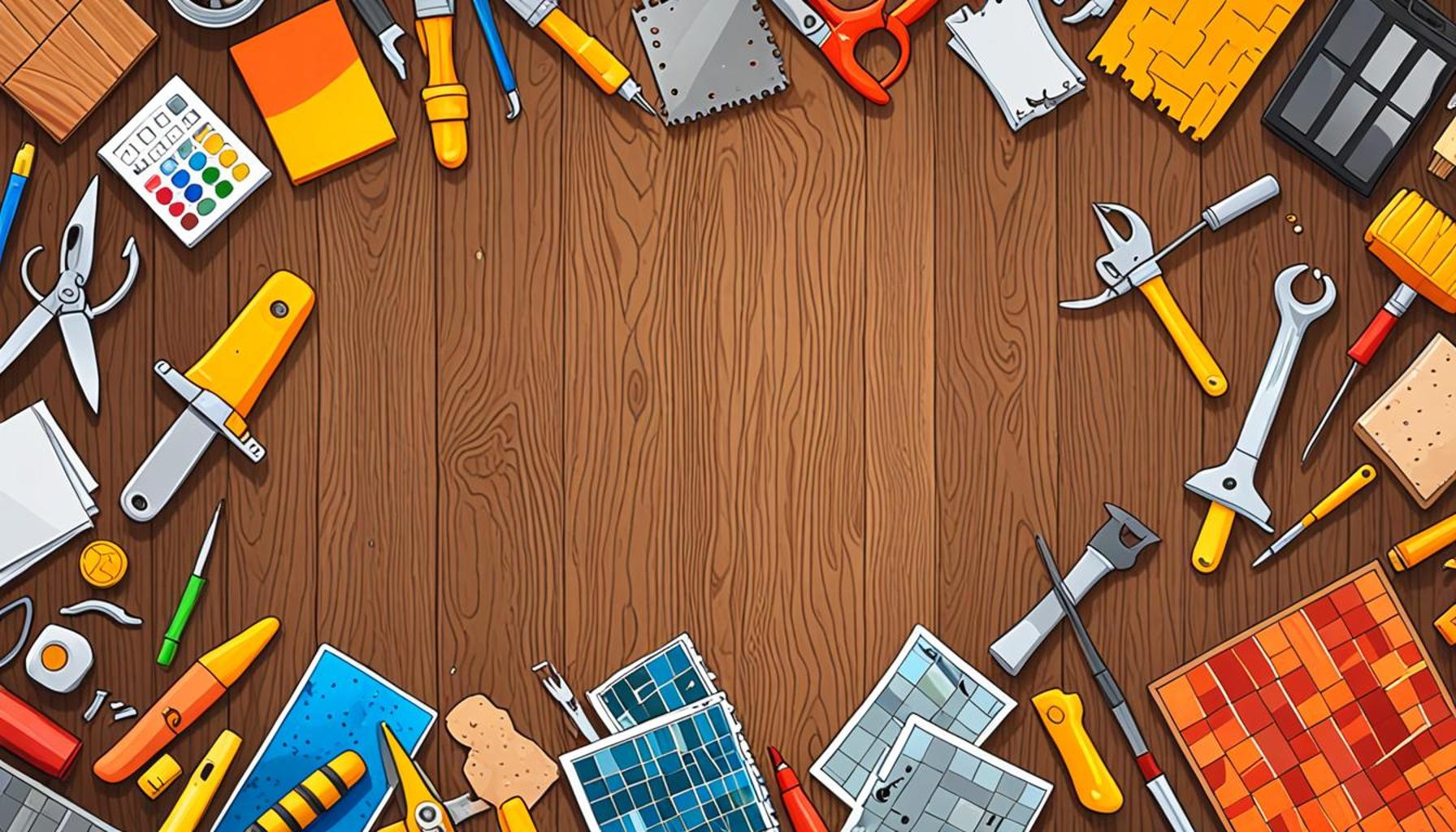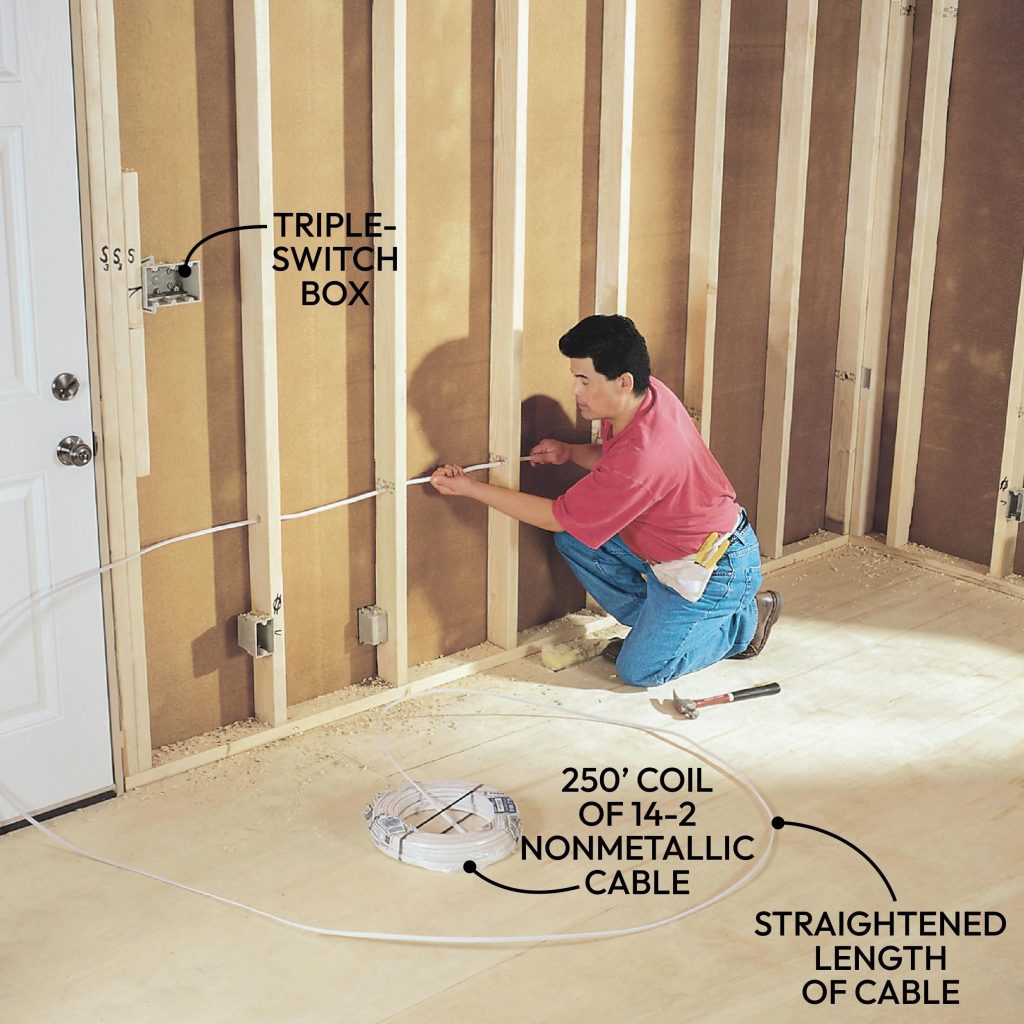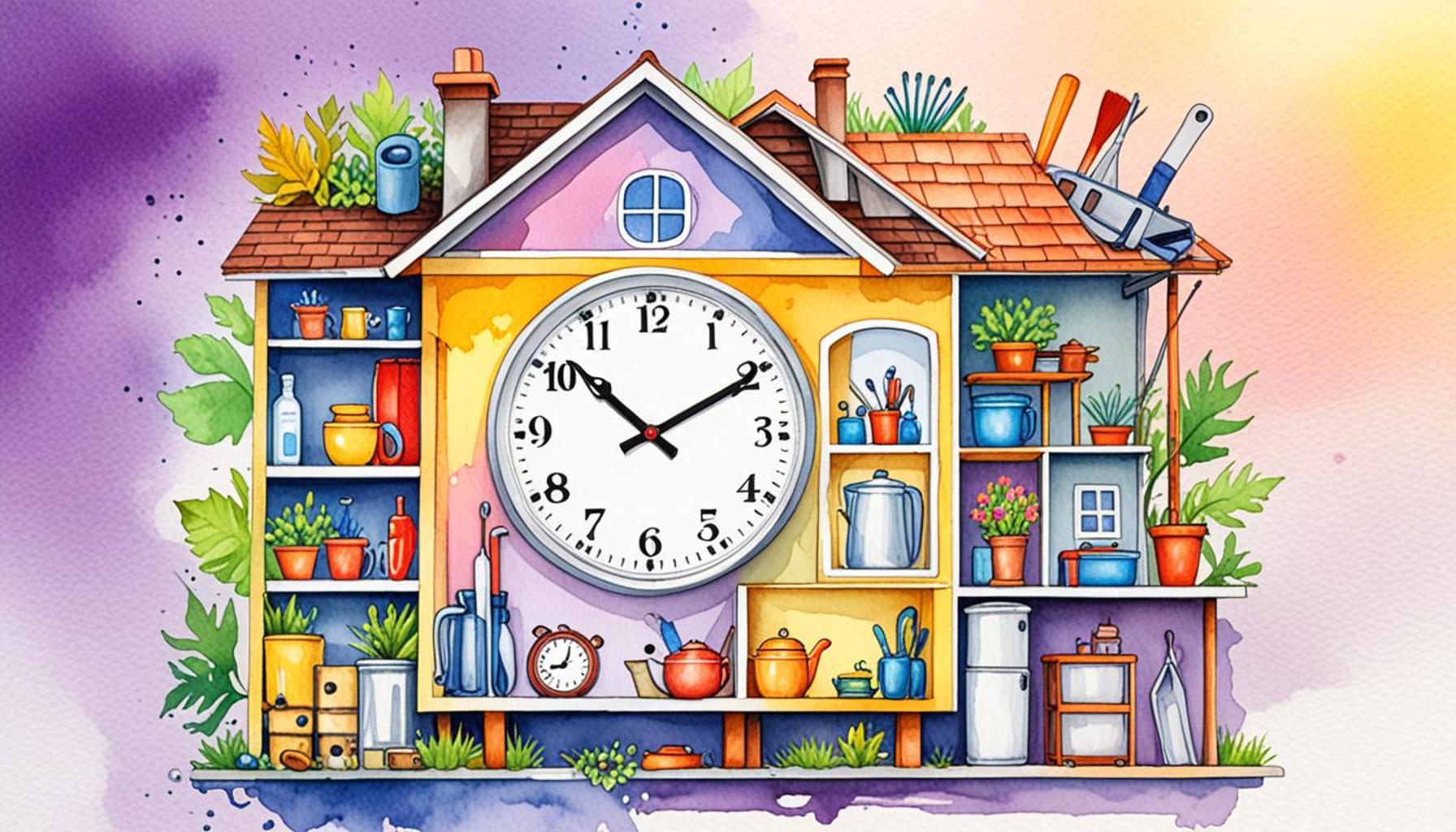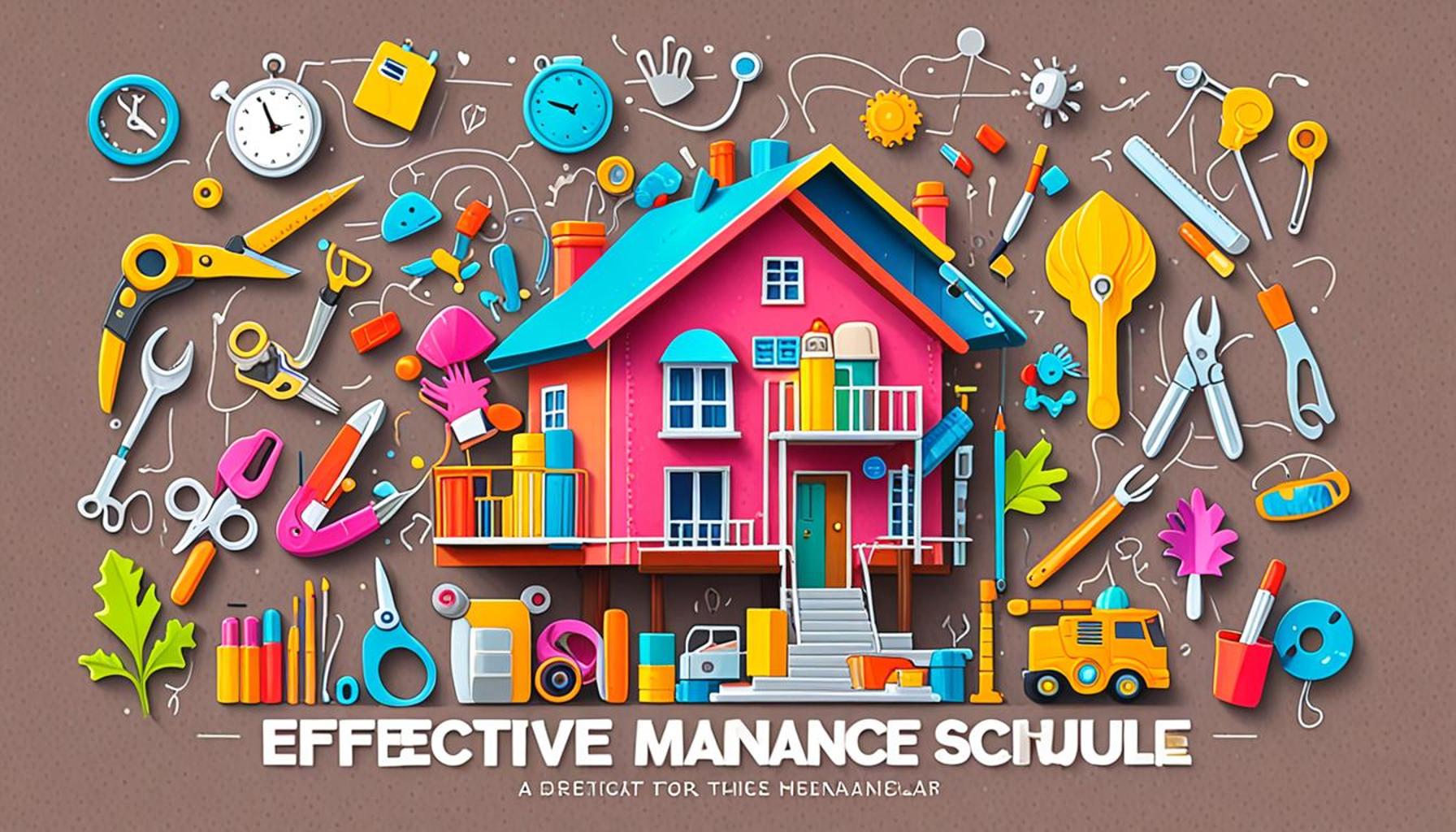How to Adjust Your Maintenance Schedule for Different Types of Flooring

Understanding Flooring Maintenance
Flooring is a critical yet often overlooked element in home design that serves as the foundation for both functionality and aesthetic appeal. It plays a significant role in the comfort and style of your living space, but proper maintenance is essential to preserve its beauty and extend its lifespan. Failing to adhere to maintenance protocols can lead to costly repairs or premature replacement. Each type of flooring—whether hardwood, carpet, tile, or laminate—comes with its own set of maintenance needs that are crucial for homeowners to understand.
To develop an effective maintenance schedule, several key factors should be taken into account:
- Type of Flooring: Different materials require different care methods. For instance, hardwood needs regular polishing and protection against moisture, whereas carpet demands frequent vacuuming and occasional deep cleaning.
- Environmental Conditions: Humidity levels can impact flooring materials significantly. For example, hardwood floors can warp in high humidity while tile can become cold and slippery in low temperatures. Understanding your local climate can inform how you care for your floors.
- Foot Traffic: Areas with high foot traffic, such as entryways and living rooms, often require more frequent cleaning and maintenance compared to less used spaces like bedrooms or home offices.
By adopting the right maintenance practices, you can keep your floors looking pristine while ensuring they last for years. Tailoring your approach based on the specific requirements of each flooring type is critical for achieving long-lasting results.
Let’s delve deeper into how to customize your maintenance regimen for various flooring types:
Hardwood Floors
Hardwood flooring offers timeless beauty but requires careful attention. Regularly sweeping or vacuuming can remove dirt and grit that may scratch the surface. Additionally, using a damp mop with a pH-balanced cleaner once a week can prevent buildup while preserving the finish. It’s also essential to periodically reapply a protective finish or sealant to mitigate scratches and stains.

Tile Flooring
Tile floors are known for their durability but require maintenance to keep grout lines looking fresh. Regular sweeping ensures that dirt does not accumulate, and a mixture of vinegar and water can efficiently clean the surface. For grout, a paste of baking soda and water can lift stubborn stains, while sealing the grout annually protects it from moisture and discoloration.
Carpet
With carpets, maintaining freshness and cleanliness is vital. Vacuuming at least once a week, particularly in high-traffic areas, helps eliminate dirt and prevents matting. For deeper cleaning, consider steam cleaning every 12 to 18 months. Additionally, addressing stains promptly with the appropriate stain remover can prevent lasting discoloration.
Laminate Floors
Laminate flooring is widely popular due to its affordability and ease of installation, yet it can be prone to scratches and moisture damage. To maintain its appearance, use a soft broom or vacuum and a microfiber mop for regular cleaning. Avoid excessive water during cleaning, as this can lead to swelling or warping.
By understanding the maintenance needs unique to each flooring type, homeowners can ensure their investment remains both beautiful and functional for many years. The right care routines based on individual circumstances—including type of flooring, environmental conditions, and foot traffic—will not only enhance the appearance of your floors but will also provide comfort and style to your home.
DIVE DEEPER: Click here to uncover time-saving strategies
Tailoring Your Maintenance Routine
Understanding the unique maintenance schedules associated with each type of flooring is essential for preserving their beauty and functionality. While many homeowners may not realize it, neglecting the specific care instructions for your flooring material can lead to costly repairs and unsightly damage. Here’s how you can adjust your maintenance routine to suit various flooring types effectively.
Hardwood Floors
Hardwood flooring exudes elegance and warmth, but it is also susceptible to wear and tear. To optimize its longevity, establish a routine that includes:
- Weekly Cleaning: Regularly sweep or vacuum your hardwood floors to eliminate dust and debris that can cause scratching.
- Damp Mopping: Using a damp mop with a pH-balanced cleaner once a week helps maintain the floor’s finish without leaving excess moisture.
- Seasonal Care: Every six months, apply a protective finish or sealant to guard against scratches and stains while restoring that showroom shine.
Keep in mind that hardwood floor maintenance varies according to seasonal changes. For instance, during winter months, the air’s dryness can lead to cracks in the wood, requiring additional moisturizing treatments to minimize this effect.
Tile Flooring
Tile floors are celebrated for their resilience and aesthetic versatility; however, they still require ample attention to maintain their appearance. Incorporate the following in your routine:
- Regular Sweeping: Weekly sweeping prevents dirt from scratching the surface and keeps the floor looking pristine.
- Monthly Cleaning: Use a vinegar and water mixture to clean the surface, tackling any stubborn stains with a specific tile cleaner.
- Grout Maintenance: To keep grout looking new, apply a paste of baking soda and water to stains. Sealing the grout every year enhances protection against moisture and staining.
With tile flooring, pay attention to the area’s humidity as well. Grout can become discolored in high-humidity environments, so proper ventilation is key.
Carpet
Carpeting creates a cozy atmosphere, but it can also trap dirt and allergens if not adequately maintained. Your approach should include:
- Weekly Vacuuming: Aim for at least once a week in all areas, especially high-traffic zones, to prevent dirt build-up and maintain texture.
- Biannual Deep Cleaning: Schedule steam cleaning every 12 to 18 months to revitalize fibers and remove deep-seated grime.
- Stain Management: Be prepared to act quickly on spills with a dedicated stain remover. This proactive approach can help prevent permanent discoloration.
Carpets also fluctuate with seasonal changes; for example, more frequent cleanings might be necessary during pollen-heavy months in spring and summer.
Laminate Floors
Laminate flooring is a fantastic affordable alternative, but it can be vulnerable to scratches and water damage. Follow these steps to keep your laminate looking its best:
- Routine Cleaning: Use a soft broom or vacuum to regularly collect dirt and dust. A microfiber mop is perfect for weekly cleaning.
- Avoid Water: Excessive water can lead to laminate swelling; damp mopping is recommended, but use minimal water.
- Annual Maintenance: Consider applying a protective sealant at least once a year to safeguard against scratches and wear.
Understanding these tailored care strategies for each type of flooring can ensure longevity and pristine aesthetics tailored to your home’s needs. By adapting your cleaning regimen based on the flooring type and other conditions, you can enjoy a beautiful, lasting floor without the hassle of premature replacements.
How to Adjust Your Maintenance Schedule for Different Types of Flooring
Maintaining various types of flooring requires an understanding of the unique needs of each material. By tailoring your maintenance schedule accordingly, you can significantly extend the lifespan of your flooring while preserving its appearance and functionality. Below is a helpful overview that focuses on both the benefits and requirements associated with different types of flooring.
| Flooring Type | Maintenance Tasks |
|---|---|
| Hardwood | Regular sweeping and periodic refinishing helps maintain shine and resistance to wear. |
| Tile | Grout cleaning and sealing are essential to avoid staining and moisture buildup. |
| Carpet | Regular vacuuming and annual deep cleaning preserve hygiene and appearance. |
| Vinyl | Mopping with a gentle cleanser keeps vinyl looking fresh and helps prevent fading. |
Each flooring type has specific maintenance tasks that not only enhance the aesthetic appeal but also contribute to long-term durability. By customizing your cleaning routine, whether it’s keeping hardwood slick and glossy or ensuring tiles are sealed against moisture, you create a tailored plan that best suits your needs. This proactive approach is especially important in areas with high foot traffic or specific environmental challenges that may impact flooring longevity.
To further refine your maintenance schedule, consider factors such as foot traffic, climatic conditions, and any specific challenges your flooring may face. Regular inspections help identify wear and tear early, allowing for timely repairs and adjustments to your maintenance plan. Don’t forget, investing a little time now can save you significant costs in the future related to replacements or extensive repairs.
DISCOVER MORE: Click here for eco-friendly DIY tips
Adapting to Unique Flooring Needs
Recognizing that not all flooring is created equal can significantly influence the effectiveness of your maintenance routine. Each material presents distinct challenges and benefits that, when addressed correctly, can lead to a longer lifespan and improved aesthetics. Let’s delve deeper into additional flooring types to complete your understanding of how to tailor your maintenance schedule.
Vinyl Flooring
Vinyl flooring is a popular choice for its affordability and ease of maintenance. However, neglecting proper care can lead to dullness and degradation over time. For optimal maintenance, consider the following:
- Weekly Cleaning: Sweep or vacuum regularly to remove particles; this simple step prevents scratches and preserves glossy finishes.
- Mopping Routine: Use a mild detergent with warm water for mopping at least once a month. Be sure to wring the mop thoroughly to avoid excess moisture that can seep into seams.
- Deep Cleaning Annually: Schedule a deep clean using a specialized vinyl cleaner once a year, addressing any discoloration or stains with a gentle approach.
In areas with high foot traffic, consider adding protective mats to reduce the risk of wear. Furthermore, while vinyl floors are generally resistant to moisture, be mindful of any spills that can lead to slipping hazards.
Natural Stone Flooring
Natural stone, such as marble or granite, offers majestic beauty, but it is porous and requires specific care. Adapt your maintenance schedule as follows:
- Dusting and Sweeping: Dust your stone floors daily with a soft cloth or a dust mop to prevent scratches from harmful debris.
- Weekly Mopping: Utilize a pH-neutral cleaner formulated for natural stone, ensuring a thorough but gentle cleaning once a week.
- Sealing Annually: To prevent moisture damage and staining, it is crucial to reseal your natural stone flooring once a year. This not only protects the surface but also enhances its luster.
In addition, avoid using acidic cleaners that can etch or damage the stone’s surface. Assess your local climate, too, since moisture levels can influence your stone’s ability to retain its beauty.
Concrete Flooring
Concrete floors are known for their industrial charm and durability but still require specific attention to maintain their appeal. Here’s how to care for them:
- Regular Dusting: Use a broom or dry mop to remove dust and debris weekly to prevent scratches and buildup.
- Monthly Scrubbing: Employ a pH-neutral cleaner with a mop or scrub brush monthly to maintain shine and remove stubborn stains.
- Sealing Every Few Years: Depending on foot traffic, an epoxy seal or wax should be reapplied every 2 to 3 years to protect against moisture and stains.
Concrete retains heat and is highly versatile, yet it can develop cracks or chips over time. Consider seasonal checks to address any emerging issues promptly, ensuring your floors last even longer.
Engineered Wood Flooring
Engineered wood floors combine the elegance of hardwood with enhanced durability. Maintenance for this type should include:
- Regular Sweeping and Vacuuming: Frequent cleaning should be done at least once a week to prevent dirt accumulation and scratches.
- Damp Mopping Monthly: Like hardwood, use a damp mop with a manufacturer-recommended cleaner to maintain the finish.
- Coating Every 3 to 5 Years: Reapply a protective coat every few years to maintain the integrity of the surface and reduce wear from foot traffic.
Be mindful of humidity levels in your home; engineered wood floors can respond better to stable environments compared to solid hardwood, decreasing the risks of warping or buckling.
By understanding the specific maintenance requirements for various flooring types, homeowners can ensure not only their appearance remains impeccable but also their functional longevity. This careful attention to maintenance and proactive approach can save homeowners both time and money in the long run.
DIVE DEEPER: Click here to discover the future of cleaning products</p
Conclusion
In summary, understanding how to adjust your maintenance schedule for different types of flooring is essential for preserving both the functionality and appearance of your home. Each flooring material, from vinyl to natural stone, requires tailored care routines that address its unique properties and challenges. By adhering to specific cleaning and maintenance practices, homeowners can enhance the longevity of their floors and avoid costly repairs down the line.
As outlined, regular attention to elements such as dusting, mopping, and sealing is vital for maintaining various flooring types. Notably, high-traffic areas may need extra protection, such as mats or rugs, while temperature and humidity conditions can influence the care required for engineered wood or concrete surfaces. These expertly crafted practices not only keep your floors looking pristine but also safeguard against premature wear and tear.
Furthermore, it’s essential to remain proactive in monitoring the condition of your flooring, as seasonal changes or unexpected spills can necessitate immediate attention. For homeowners seeking to delve deeper into flooring maintenance, consider investing in specialized products or consulting professionals for guidance tailored to your specific needs.
Ultimately, a well-planned maintenance routine will ensure that your floors not only meet aesthetic standards but also stand the test of time, reflecting the quality and care you bring to your home. By embracing these targeted strategies, you’ll pave the way for a beautiful and enduring foundation for years to come.


